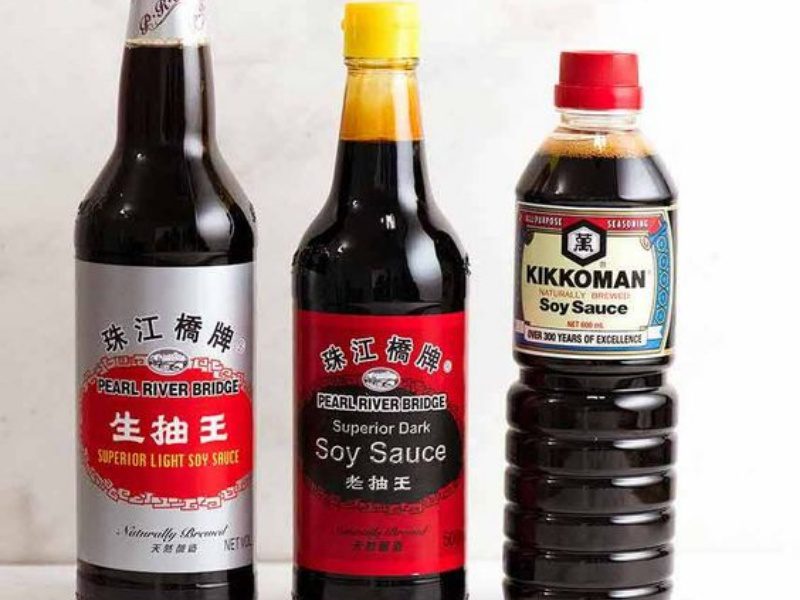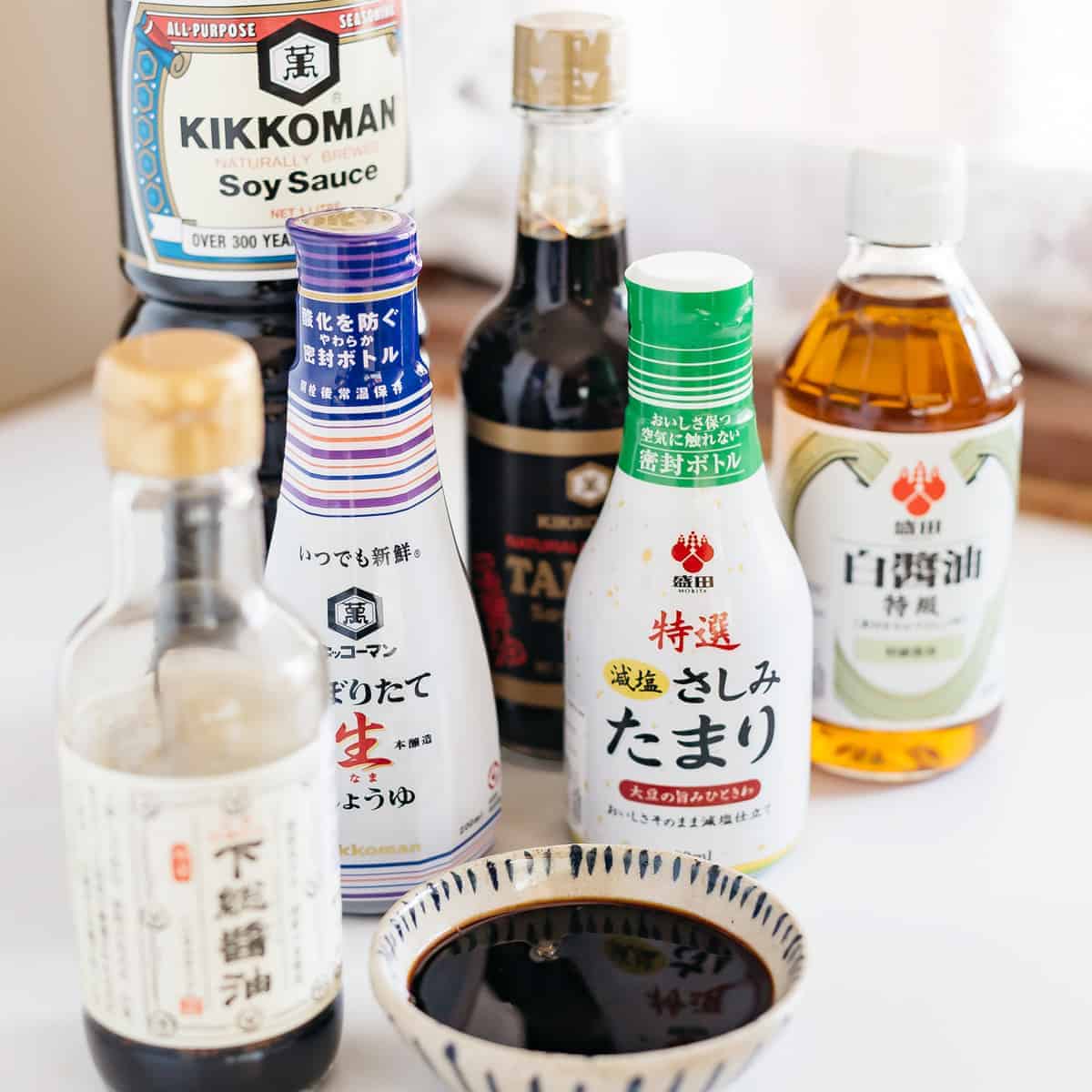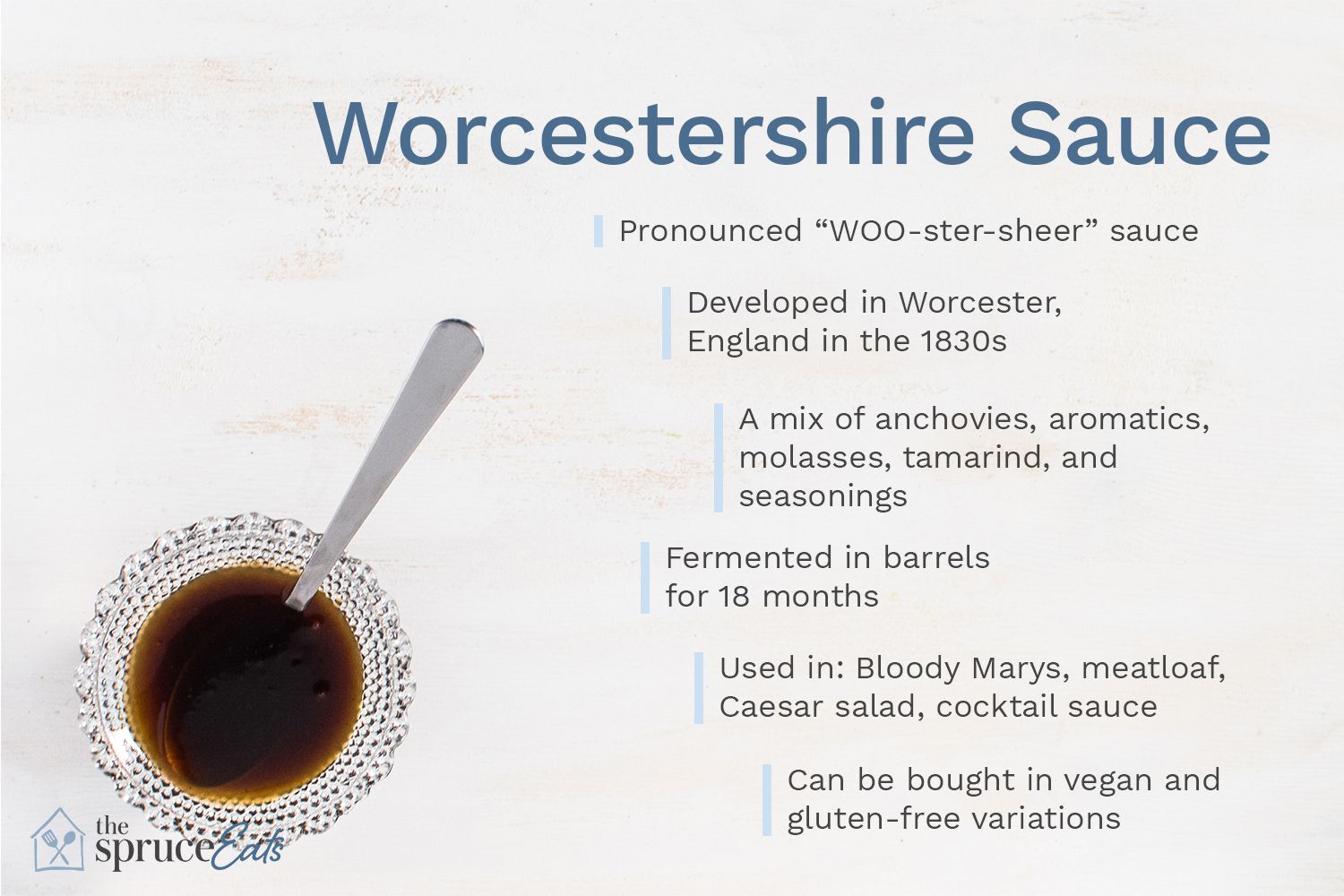Introduction

Soy sauce and Worcestershire sauce are two popular condiments that can enhance the flavor of various dishes. While both sauces are versatile and can be used in a variety of recipes, there are distinct differences between them. This article will provide a brief overview of soy sauce and Worcestershire sauce, including their types, health benefits, ingredients, and flavor profiles. By understanding these differences, you can make informed decisions about which sauce to use in specific recipes and discover new ways to incorporate them into your cooking.
Brief Overview Of Soy Sauce And Worcestershire Sauce
Soy sauce and Worcestershire sauce are both condiments commonly used to enhance the flavor of various dishes. Soy sauce is a staple in Asian cuisine and is made from fermented soybeans, roasted grains, water, and salt. It has a distinct salty and savory taste, with varying levels of intensity depending on the type.
On the other hand, Worcestershire sauce is a British condiment with a complex flavor profile. It is made from a blend of vinegar, molasses, sugar, onions, garlic, anchovies, tamarind, and various spices. Worcestershire sauce has a tangy, sweet, and umami taste.
While soy sauce is more commonly used in Asian cooking, Worcestershire sauce is a versatile condiment that can be used in a wide range of recipes, including marinades, sauces, and dressings. Its unique blend of ingredients adds depth and complexity to dishes.
Both sauces bring distinct flavors to the table, and their usage depends on the desired taste and cuisine being prepared. By understanding the characteristics of each sauce, you can utilize them effectively to elevate your culinary creations.
Soy Sauce
Soy sauce is a versatile condiment that originated in Asia and has become popular worldwide. It is made from fermented soybeans, roasted grains, water, and salt. Soy sauce has a distinct salty and savory flavor with a hint of umami. There are different types of soy sauce, including light soy sauce, dark soy sauce, and tamari sauce. It is commonly used in Asian cuisine to enhance the taste of stir-fries, marinades, dipping sauces, and soups. In addition to its flavor, soy sauce also offers health benefits, as it is rich in essential amino acids and antioxidants. So, whether you’re cooking an Asian dish or looking to add depth of flavor to your favorite recipes, soy sauce is a go-to condiment to have in your pantry.
Types Of Soy Sauce

There are different types of soy sauce available, each with its own unique flavor and purpose. Here are a few common types:
- Light Soy Sauce: This variety is the most commonly used and has a thin consistency. It has a milder flavor and is often used for dipping sauces, marinades, and stir-fries.
- Dark Soy Sauce: Dark soy sauce is thicker and has a slightly sweeter and more intense flavor. It is often used for braising, glazing, and adding color to dishes.
- Tamari Sauce: Tamari is a gluten-free soy sauce made without wheat. It has a rich and full-bodied flavor, making it a suitable alternative for those with gluten sensitivities.
These different types of soy sauce allow for versatile usage in various recipes, adding depth and complexity to dishes.
Health Benefits Of Soy Sauce
Soy sauce offers several health benefits due to its rich nutritional profile. It is a good source of protein, which is essential for muscle growth and repair. It also contains antioxidants that help protect the body against oxidative stress and inflammation. Additionally, soy sauce is a good source of vitamins and minerals, including iron, calcium, and potassium. These nutrients support overall health and proper functioning of the body. However, it is important to consume soy sauce in moderation due to its high sodium content.
Worcestershire Sauce
Worcestershire sauce is a dark, flavorful condiment that originated in the United Kingdom. It is made by combining a variety of ingredients, including vinegar, molasses, tamarind, garlic, onions, and various spices. The sauce undergoes a fermentation process, which gives it a complex and rich flavor profile. Worcestershire sauce is known for its tangy, sweet, savory, and slightly sour taste, making it a versatile ingredient in cooking. It adds depth and complexity to dishes such as marinades, dressings, and sauces. Worcestershire sauce is particularly famous for its use in traditional British dishes like steak and kidney pie and Bloody Mary cocktails.
Ingredients And Preparation Of Worcestershire Sauce

Worcestershire sauce is made from a combination of ingredients that contribute to its distinct flavor profile. The traditional recipe includes vinegar, molasses, tamarind, garlic, onions, and an array of spices, such as cloves, cinnamon, and chili peppers. These ingredients are fermented together for a period of time, usually ranging from several months to years, to develop the complex flavors that Worcestershire sauce is known for. The fermentation process allows the flavors to meld and intensify, resulting in a tangy, sweet, and slightly sour sauce that adds depth and richness to various dishes.
Flavor Profile And Culinary Uses
Worcestershire sauce is known for its complex and savory flavor profile. It has a tangy and slightly sour taste, with hints of sweetness from the molasses. The combination of vinegar, tamarind, and spices adds depth and richness to dishes. Worcestershire sauce is commonly used as a seasoning in marinades, sauces, and dressings, adding a distinctive umami flavor to meat, seafood, vegetables, and even cocktails.
Soy sauce, on the other hand, has a bold and salty taste with a subtle sweetness. It is often described as having an “umami” flavor, which adds depth and complexity to dishes. Soy sauce is a versatile condiment used in a variety of cuisines, including Asian, American, and European. It is used in stir-fries, marinades, dipping sauces, soups, and even as a seasoning for rice and noodles.
Both Worcestershire sauce and soy sauce can enhance the flavors of dishes and bring out the natural umami taste. Their uses may overlap in some recipes, but each sauce has its own distinct flavor profile that lends itself well to specific culinary applications.
Key Differences
When comparing soy sauce and Worcestershire sauce, there are several key differences to consider:
- Sodium Content: Soy sauce tends to have a higher sodium content compared to Worcestershire sauce. This is important to keep in mind for those watching their sodium intake.
- Flavor Profile: While both sauces have a savory umami flavor, soy sauce has a bold and salty taste, while Worcestershire sauce has a tangy and slightly sour flavor with hints of sweetness from the molasses and spices.
- Culinary Uses: Soy sauce is commonly used in Asian cuisine, particularly in stir-fries, marinades, and dipping sauces. Worcestershire sauce, on the other hand, is often used as a seasoning in marinades, sauces, and dressings, and can add a distinct flavor to meat, seafood, and vegetables.
Overall, while there are similarities between soy sauce and Worcestershire sauce, their differences in sodium content, flavor profile, and culinary applications make them unique condiments in their own right.
(Reference: , )
Sodium Content Comparison

When comparing soy sauce and Worcestershire sauce, one key difference is their sodium content. Soy sauce tends to have a higher sodium level compared to Worcestershire sauce. This is important to consider, especially for those watching their sodium intake. While Worcestershire sauce contains around 3% of the daily recommended value of sodium per tablespoon, soy sauce can contain up to 40% of the daily recommended value. Therefore, if you are trying to limit your sodium intake, it may be advisable to use Worcestershire sauce in moderation instead of soy sauce.
Umami Flavor Profile Variations
Umami is often described as a savory, meaty, or brothy taste that adds depth and richness to dishes. While both soy sauce and Worcestershire sauce have umami flavor profiles, there are slight variations in their intensity and complexity. Soy sauce offers a bold, salty umami taste that is often associated with Asian cuisine. On the other hand, Worcestershire sauce provides a more balanced umami flavor with hints of tanginess and sweetness, making it a versatile option for both meat-based and vegetarian dishes. These subtle differences in umami profiles allow for a variety of culinary uses and flavor combinations.
Which Sauce To Use When
When it comes to deciding which sauce to use, it all depends on the flavor profile you are looking to achieve in your dish.
Soy sauce is perfect for Asian-inspired recipes such as stir-fries, noodle dishes, and sushi. Its bold, salty flavor enhances the umami taste and pairs well with seafood, tofu, and vegetables.
On the other hand, Worcestershire sauce is versatile and works well in a variety of dishes. It adds depth and complexity to meat-based dishes, including burgers, stews, marinades, and even Bloody Mary cocktails.
Both sauces can be used as marinades, dipping sauces, or in dressings and sauces. Experiment with both to find the perfect balance of flavors for your culinary creations.
Best Uses For Soy Sauce

Soy sauce is a versatile condiment that adds depth and flavor to a variety of dishes. Here are some of the best uses for soy sauce:
- Stir-fries: Soy sauce is a staple in Asian cuisine, making it an essential ingredient in stir-fries. It adds a savory umami flavor and balances the other ingredients.
- Marinades: Soy sauce is a great base for marinades, especially for meats like chicken, beef, or pork. It helps tenderize the meat and enhances the overall flavor.
- Dipping sauce: Soy sauce is commonly used as a dipping sauce for sushi, dumplings, and spring rolls. Its salty and tangy taste complements the flavors of these bite-sized delights.
- Noodle dishes: Whether it’s chow mein, lo mein, or ramen, soy sauce adds complexity and richness to noodle dishes.
- Asian-inspired dressings: Soy sauce can be used as a key ingredient in dressings for Asian-style salads. It adds a unique flavor and enhances the overall taste of the salad.
Remember to use soy sauce in moderation as it can be quite salty. Adjust the amount according to your taste preferences to achieve the perfect balance of flavors in your dishes.
Best Uses For Worcestershire Sauce
Worcestershire sauce is a versatile condiment that can enhance the flavor of various dishes. Here are some of the best uses for Worcestershire sauce:
- Marinades: Add Worcestershire sauce to your marinades for meats like steak, chicken, or pork. It helps to tenderize the meat and adds a rich, savory flavor.
- Grilled meats: Brush Worcestershire sauce onto grilled meats like burgers, kebabs, or ribs for a tangy and flavorful glaze.
- Sauces and gravies: Incorporate Worcestershire sauce into your sauces and gravies to add depth and complexity. It pairs well with tomato-based sauces and can elevate the flavor of dishes like stews or casseroles.
- Bloody Mary cocktail: Worcestershire sauce is a key ingredient in the classic Bloody Mary cocktail. Its savory and spicy notes add a unique kick to this popular drink.
- Roasted vegetables: Drizzle Worcestershire sauce over roasted vegetables like Brussels sprouts, carrots, or potatoes to add a savory and slightly tangy flavor.
Remember to use Worcestershire sauce in moderation, as it can be quite potent. Adjust the amount according to your taste preferences to enhance the overall taste of your dishes.
Conclusion
In conclusion, Worcestershire sauce and soy sauce are both versatile condiments that can add depth and flavor to a variety of dishes. While Worcestershire sauce boasts a unique blend of ingredients like vinegar, molasses, and tamarind extract, soy sauce is known for its rich umami flavor and various types, such as light, dark, and tamari. When deciding which sauce to use, consider the specific flavors and ingredients of your dish. Experimentation and personal preferences play a crucial role in determining the best choice. Incorporating both sauces into your cooking repertoire can elevate the taste of your meals and provide a satisfying culinary experience.
Summary Of Differences Between Soy Sauce And Worcestershire Sauce

Soy sauce and Worcestershire Sauce have distinct differences in flavor profiles and ingredients. Soy sauce is known for its rich umami flavor and is derived from fermented soybeans, while Worcestershire sauce has a unique blend of ingredients like vinegar, molasses, and tamarind extract. In terms of sodium content, soy sauce generally has a higher sodium level than Worcestershire sauce. Additionally, soy sauce comes in different variations such as light, dark, and tamari, while Worcestershire sauce has a consistent flavor profile. Both sauces have their own culinary uses and can be incorporated into various dishes depending on desired flavors. Overall, understanding these differences can help in choosing the right sauce for specific recipes.
Tips For Incorporating Both Condiments Into Cooking
When incorporating both soy sauce and Worcestershire sauce into your cooking, here are some tips to keep in mind:
- Pair wisely: Consider the flavor profiles of each sauce and choose the one that complements your dish best. Soy sauce works well with Asian-inspired dishes, while Worcestershire sauce adds a unique tang to meat-based recipes.
- Experiment with blends: Mix soy sauce and Worcestershire sauce together to create a unique flavor profile in marinades, dressings, or sauces.
- Use in moderation: Both sauces can be quite strong in flavor, so start with small amounts and adjust to taste.
- Enhance umami: Combine soy sauce and Worcestershire sauce with other umami-rich ingredients like mushrooms, tomatoes, or miso paste to enhance the savory flavors in your dishes.
By incorporating these tips, you can elevate your dishes and explore the versatility of both soy sauce and Worcestershire sauce in your cooking.
FAQ About Soy Sauce Vs Worcestershire Sauce: Contrasting Condiments
Q: What is the main difference between Soy Sauce and Worcestershire Sauce?
A: The primary difference lies in their ingredients and flavor profiles. Soy sauce is made from fermented soybeans, while Worcestershire sauce typically contains vinegar, molasses, anchovies, and tamarind.
Q: Are Soy Sauce and Worcestershire Sauce interchangeable in recipes?
A: While both sauces add savory umami flavor to dishes, they have distinct tastes. Soy sauce is saltier and richer, ideal for Asian dishes, while Worcestershire sauce has a tangy, savory-sweet taste, often used in Western cuisines like marinades and dressings.
Q: Can vegetarians and vegans consume Worcestershire Sauce?
A: Traditional Worcestershire sauce contains anchovies, making it unsuitable for vegetarians and vegans. However, some brands offer vegetarian or vegan versions that omit anchovies.
Q: Do Soy Sauce and Worcestershire Sauce have similar nutritional values?
A: Both sauces are sodium-rich condiments, but Worcestershire sauce typically contains more sugar and calories due to ingredients like molasses. It’s essential to check labels if you are monitoring your sodium or sugar intake.
Q: How should Soy Sauce and Worcestershire Sauce be stored?
A: Both Soy Sauce and Worcestershire Sauce should be stored in a cool, dark place like a pantry. Once opened, refrigerate them to maintain their quality and flavor.
Q: Are there any health benefits associated with consuming Soy Sauce or Worcestershire Sauce?
A: In moderate amounts, Soy Sauce can provide some beneficial nutrients like antioxidants and probiotics from the fermentation process. Worcestershire sauce may offer trace nutrients from its ingredients but is usually consumed in small quantities, so the health benefits are limited.

Hot Pot Chinese Restaurant, located in Mechanicsville, MD 20659, is a culinary destination that offers a delightful array of Chinese cuisine. From the cozy ambiance to the delectable dishes, Hot Pot Chinese Restaurant is dedicated to providing an exceptional dining experience for all patrons. Since our establishment, Hot Pot Chinese Restaurant has been committed to serving the finest Chinese food, offering a diverse menu that caters to a wide range of tastes. Whether you’re craving traditional favorites like Kung Pao Chicken and Mongolian Beef or seeking out more adventurous options like Szechuan Spicy Hot Pot, our menu has something to satisfy every craving.